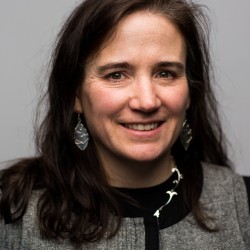
Congratulations to Cecilia Bitz and Abigail Swann for receiving awards from the American Geophysical Union, the world’s largest earth and space society. This year, the AGU recognized 82 scientists for their “sustained and unique contributions to advancing our understanding of Earth, its atmosphere and oceans, and planets and astral bodies beyond our own”.
Cecilia Bitz is a professor and chair of the Department of Atmospheric Sciences who studies the role that sea ice plays in shaping the climate in high latitudes. She is interested not only in our present and future climates, but also climates of the past. She is actively engaged in research on improving prediction of Arctic sea ice and sea ice data assimilation, investigating wave-ice and coupled air-sea-ice interactions that control large-scale climate. As a well-known expert in her field, she leads several projects funded by the National Science Foundation and the National Oceanographic and Atmospheric Administration, and has been called to testify to the U.S. Senate on Arctic climate change.

Abigail Swann is an associate professor of the Department of Atmospheric Sciences. She is an atmospheric scientist and ecologist who is interested in the transitions, thresholds, and feedbacks of the coupled ecosystem-climate system, or ecoclimate. More specifically, she works to understand when, where, and how plants influence the climate across a range of spatial and temporal scales. Her theoretical interests lead her to such questions as: how will changes in agricultural area create feedbacks in climate? Or, what processes control the response of climate to vegetation in different regions of the world? As such, her work is global in scale, considering the interactions between terrestrial ecosystems not only on their local environment, but also on other regions connected to the local ecosystem through atmospheric circulation.

